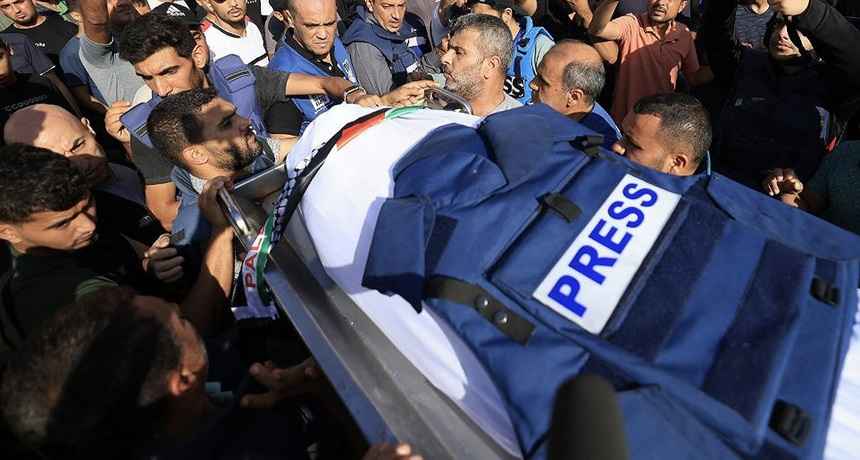Journalists working in Gaza are facing severe threats, with experts and press freedom groups pointing to deliberate and systematic targeting by Israeli forces. The situation escalated in December 2023 when Al Jazeera reporters Samer Abudaqa and Wael Dahdouh were struck during an air raid while reporting from Farhana School in Khan Younis. Despite efforts to rescue him, Abudaqa succumbed to his injuries after being left without medical aid for over five hours.
Abudaqa’s tragic death is part of a larger pattern. According to Reporters Without Borders (RSF), at least 130 journalists and media workers have been killed by Israeli forces since the onset of the conflict in October 2023, with some groups reporting even higher numbers. The mortality rate among media professionals in Gaza is alarming, with an estimated 75% of global reporter deaths occurring in the region between October and December 2023. The International Federation of Journalists (IFJ) revealed that the casualty rate for journalists in Gaza now exceeds 10 percent.
Investigations have confirmed that many of these deaths were not incidental. RSF identified 31 cases where there is sufficient evidence that journalists were deliberately targeted because of their profession. Among those killed was the co-founder of Ain Media, who died in what experts described as a targeted airstrike. These incidents suggest that Israeli military actions go beyond the hazards of war, aiming to restrict independent reporting.
Key Points:
Over 130 journalists killed in Gaza since October 2023.
Al Jazeera's Samer Abudaqa died in a December 2023 air raid.
RSF confirms journalists are being deliberately targeted.
Media offices destroyed, silencing over 80 outlets in Gaza.
International media banned from Gaza, increasing isolation.
Investigations disprove Israeli claims linking journalists to militants.
In addition to targeting individuals, Israeli forces have destroyed numerous media offices and infrastructure in Gaza. High-rise buildings housing various media outlets were demolished during the early stages of the conflict, effectively silencing both local and international reporting efforts. Over 80 media institutions were affected, forcing many to cease operations.
Palestinian journalists, who have been banned from leaving Gaza or re-entering if they manage to escape, risk their lives to document the ongoing conflict. International media organizations have also been barred from entering, further isolating Gaza from external coverage. Experts argue that this media blackout is part of a broader strategy to control the narrative surrounding the conflict.
Despite accusations that Israel is targeting journalists as part of its military operations, Israeli officials have frequently claimed that those killed were affiliated with militant groups such as Hamas or Islamic Jihad. However, investigations, including those conducted by independent bodies like The Washington Post, have contested these claims. In one notable case, Israeli forces accused journalists of using drones for military purposes, but evidence later showed the drone was being used for journalistic work.
As the conflict continues, press freedom organizations and international bodies remain deeply concerned about the safety of journalists in Gaza. The intentional targeting of media personnel and infrastructure, combined with restrictions on external reporting, paints a grim picture of the dangers faced by those seeking to report the truth amid one of the deadliest conflicts for journalists in recent history.







